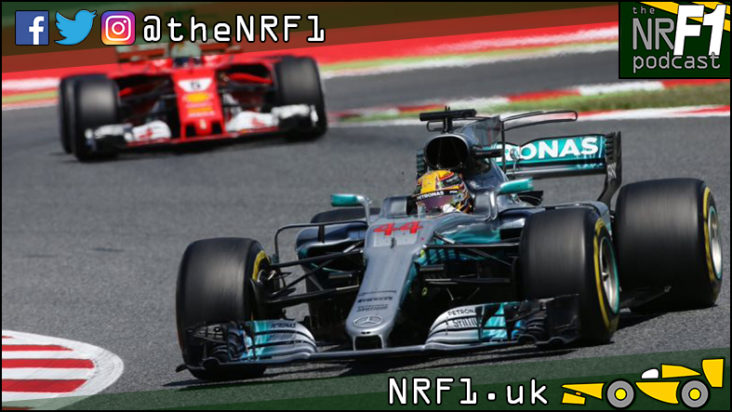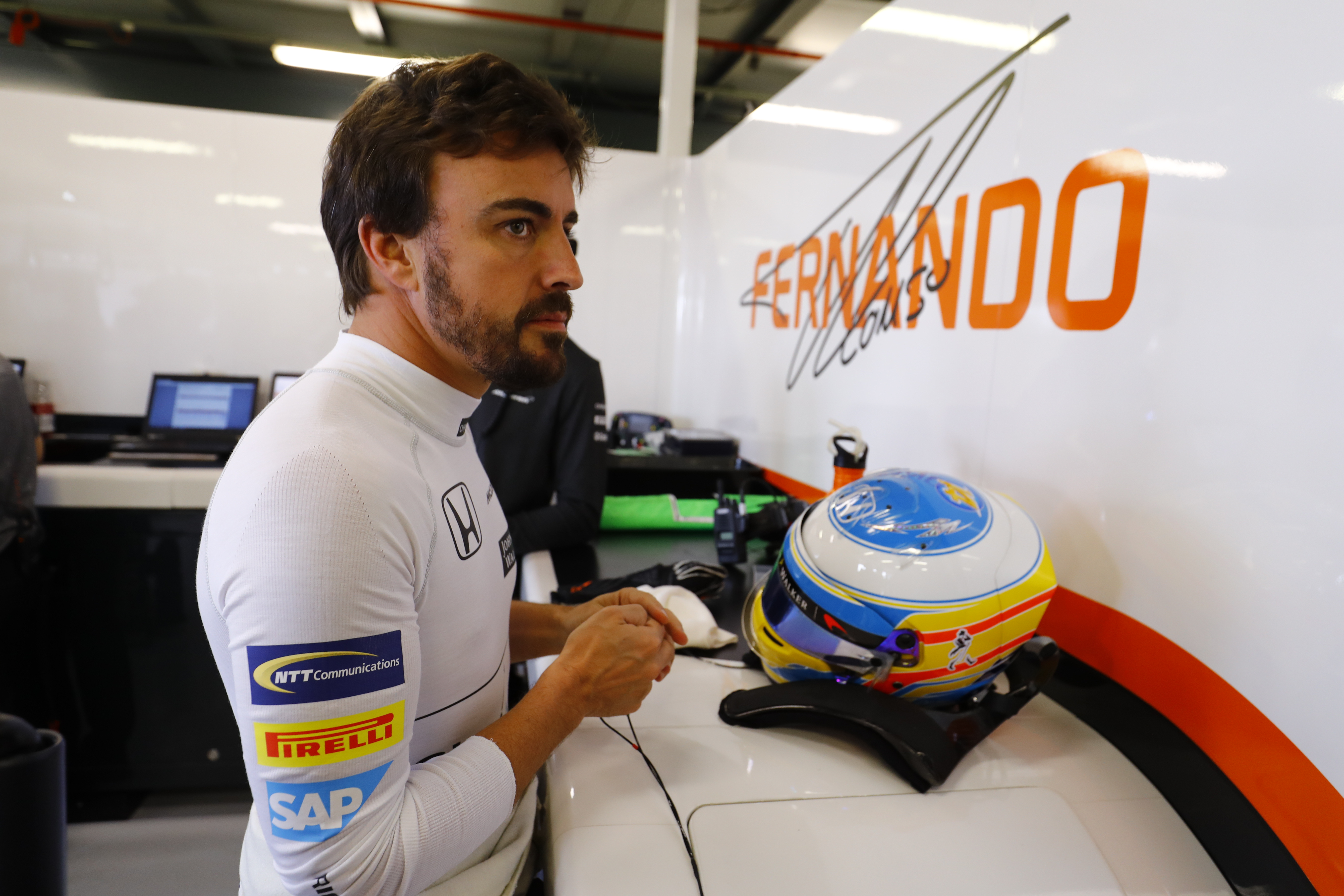Catalunya leaves a sense of F1 deja-vu all over again

By Callum Springall
It’s 1998 again, isn’t it? A scarlet Ferrari with a German driver and a silver car with a Brit and a Finn at the wheel, is enough to give most Formula 1 fans above a certain age a whiff of nostalgia.
Throw into that mix the close racing and a healthy rivalry between two drivers that define an era, and it’s quite clear 2017 – or 1998, I can’t quite tell the difference – is shaping up to be a classic season, not to mention an ever more welcome boost to F1’s reputation at such a critical moment in the sport’s 67-year history.
So then, the Spanish Grand Prix.
Right off the start line, it was Sebastian Vettel who edged his way into the lead with Ferrari’s mysterious new starting sequence, leaving his championship rival and pole-sitter Lewis Hamilton having to settling for second.
After saying that he would need a ‘four-car shunt’ to repeat his 2016 heroics, Max Verstappen almost got exactly that in the shape of a three-car shunt. The only thing is, that pile-up included him – meaning both he and Kimi Raikkonen were left to crawl their way back to the pits.
In the end it was deemed a racing incident, and rightly so considering three certainly doesn’t go into one in Barcelona, pinching Valtteri Bottas on the inside – as was always going to be the case – and he clipped both the kerb on the inside and the Ferrari on the outside.
It left Raikkonen and Verstappen careering across the run-off and into the path of the onrushing pack, which had the concertina effect of Felipe Massa running Fernando Alonso off-track through no fault of his own; that in turn ruined the two-time champion’s home race, along with any chance of scoring some much needed points for McLaren.
SUBSCRIBE: Listen to The NR F1 Podcast on your chosen podcast player
At the front it became the perfect mix of two fierce competitors going hell for leather, as well as a marginal call on strategy. Vettel had the better of both the start and the early pace, opening up a lead of almost three seconds in two laps.
 However, this seemed to be firmly in the Mercedes game plan and according to Niki Lauda before the race, his team’s drivers would conserve the tyres for the opening three laps. That proved to be the case.
However, this seemed to be firmly in the Mercedes game plan and according to Niki Lauda before the race, his team’s drivers would conserve the tyres for the opening three laps. That proved to be the case.
Hamilton began to close in and forced Ferrari into an early stop – much like the scenario from the Australian Grand Prix. Bottas also played his part in preventing Vettel from retaking the lead and bridging a gap between himself and his closest rival.
The virtual safety car (VSC) had what was probably the biggest impact on the race – or rather Mercedes exploitation of it – which afforded the chasing Brit to gain a somewhat mutilated advantage of six seconds, despite leaving him a mountain of a final stint to complete that encompassed almost the entire second half of the grand prix.
In the end, both were on equal strategies and it was the triple champion who exploited his slight pace advantage over the Ferrari, to claim the lead on lap 44 and never relinquish it.
Speaking of pace advantages, that brings me to my next point.
The Spanish Grand Prix sees both the start of the European season in earnest along with the first major development push in the year-long aerodynamic arms race, and I’d be more than tempted to declare Mercedes the ones that dealt the first blow.
A whole raft of aggressive, aerodynamic upgrades had evidently brought the downforce advantage back into the silver corner on a track that not only relies heavily on it, but one that seemed to play into Ferrari’s hands up until a couple of weeks ago.
In Sochi, it was Mercedes that drew first blood in the power-hungry sector 1, while a more mixed sector 2 played equally into the hands of the well-balanced Maranello brainchild, before a conclusive red onslaught seemed to confirm Ferrari’s advantage in the final sector.

Fernando Alonso’s home race didn’t go to plan. A bit like McLaren Honda’s entire partnership.
Comparatively, the Circuit de Barcelona-Catalunya yielded a more competitive Mercedes in the sweeping corners in sectors 1 and 2, as well as the typically Mickey Mouse-style final sector that so crucially tipped the equilibrium in Ferrari’s favour just two weeks ago.
On another note, Red Bull’s supposed B-spec car appeared to have been nothing exceeding an abject failure, considering the expectation prior to the weekend and the fact the one remaining Red Bull was more than a minute behind the leading tussle, albeit on the podium by way of attrition.
In their fight with the Milton Keynes outfit, the plucky and consistently impressive Force India appear to be relatively pretty in pink after two steady drives from Sergio Perez and Esteban Ocon moved them to within 19 points of third place.
A quick mention for Ocon, who I would be itching to point out as the heir apparent – alongside Max Verstappen – to one of either Lewis Hamilton or Sebastian Vettel. His constantly quick and functional performances are currently putting him on a par with his vastly more experienced and highly esteemed team-mate, even with some room for improvement.
Funnily enough, in his first full season at this level the young Frenchman is already showing the most vital quality of a champion: a hunger for points and nothing else. If you think of the great year-long performances in recent seasons, then Fernando Alonso’s 2012 season in an average Ferrari saw him pick up points in just about every race, while some interstellar races allowed him to challenge the eventual champion Vettel right down to the last few laps of the last race. Minus the huge speed Ocon is displaying this at such an early stage, which is hugely promising.
One team the plucky Silverstone-based team are leaving in their wake is their now-perennial rival Williams, who were comparatively nowhere. If not lapped.
On one side of the garage it appears Lance Stroll is almost literally having a stroll in the park on Sundays, seeming to be virtually anonymous after another lacklustre qualifying, not to mention being overtaken by the straight out of retirement Felipe Massa. Speaking of the Brazilian, his race was ruined from lap one, picking up a puncture from his collision with the home hero before becoming a McLaren magnet, in a move that was decisive in the battle for the win; Stoffel Vandoorne turned into him, thereby bringing out the influential VSC and forcing the Williams into the pits once more.
Meanwhile in the battle at the blunt end of the championship, Pascal Wehrlein secured six vital points for Sauber in their quest to better the fallen giants on the grid
McLaren. McLaren? Seriously?!
I feel like it would be appropriate to go on a rant, but in short the current bugbears for the second most successful team in F1 lie just behind the driver’s head.
In an engine formula there is much to be gained – and equally as much to be lost – in the amount of horsepower the engine is able to produce, and in Honda’s case the decision to essentially reset and go to a completely new design philosophy has, for all intents and purposes, sent the team back to year one.
That’s right. Three years and no meaningful progress. Before the season started, I criticised Ferrari for a lack of a consistent design philosophy, which is now even more applicable to Honda than it was to their once arch nemesis.
All right, that was a bit of a rant. But in really short terms you have to be prepared to give something the development time it deserves, and much of the expected progress through the now-redundant token system didn’t come.
So there you have it. Some close racing, close competition, a genuine title fight, added nostalgia for some and the accompanying ineptitude on the part of others.
Just like 1998.
♦ Callum Springall is a blogger with the NRF1. You can follow Callum on Twitter @callumspring18

